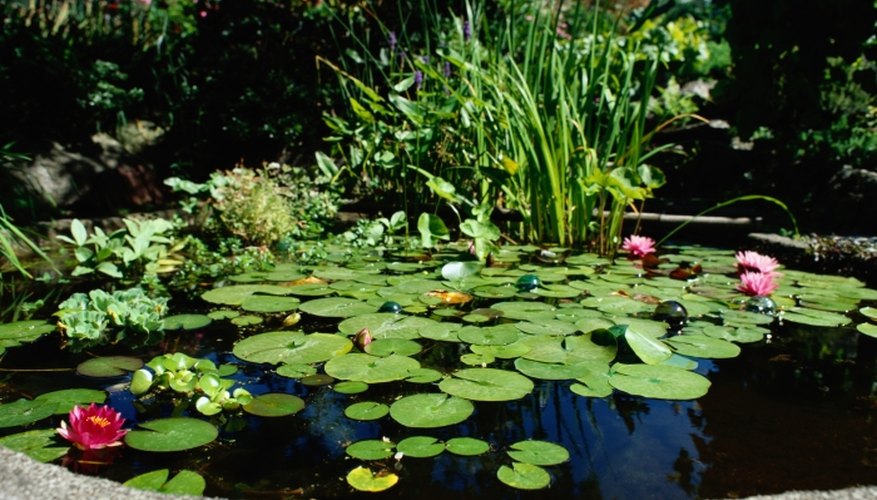Constantly low pond levels, as well as newly developed areas of mud near ponds, are sure indicators that there is a leak somewhere in the pond. Identifying the leak is not as easy as it sounds, especially when the leak is small. Dye tracers are tablets containing coloured pigment which dissolve when placed into water. The dissolved dye then moves in a path toward the source of the leak, thus identifying its location. Using dye tracers is a simple task, but requires close observation once inserted into a pond.
Purchase a dye tracer from a home improvement centre, garden centre or pool supply store. Dyes are available in a variety of colours including red, yellow, blue and orange. Choose a colour that you can see easily against the colour of the water in the pond. If the water is brown, choose a yellow or green coloured dye tracer. If the water is clear or semitransparent, any colour dye works well.
- Constantly low pond levels, as well as newly developed areas of mud near ponds, are sure indicators that there is a leak somewhere in the pond.
- If the water is clear or semitransparent, any colour dye works well.
Place the dye around the pond edge in evenly spaced intervals approximately 30 cm (one foot) apart. The spacing distance may need to be increased depending on the size of the tablets. Refer to the dye packaging instructions for proper amounts and spacing.
Wait for three to five minutes while the dye tracer tablets dissolve into the water.
Observe the pond water carefully to determine where the coloured water is moving to. This is the location of the leak in the pond.
TIP
Detecting leaks using dyes is easiest for small water garden ponds or fish ponds. In addition to dye tablets, liquid dyes and powdered dyes can be used by simply pouring them into the pond water. Depending on the colour of the dye, it can take anywhere from two days to two weeks for the dye to completely disappear from the pond water.
